Idea by
Yuchen Mei
http://www.presidentsmedals.com/Entry-39951
Call for ideas 2017
Mister Miyazaki’s Forest Homes
Mister Miyazaki’s Forest Homes
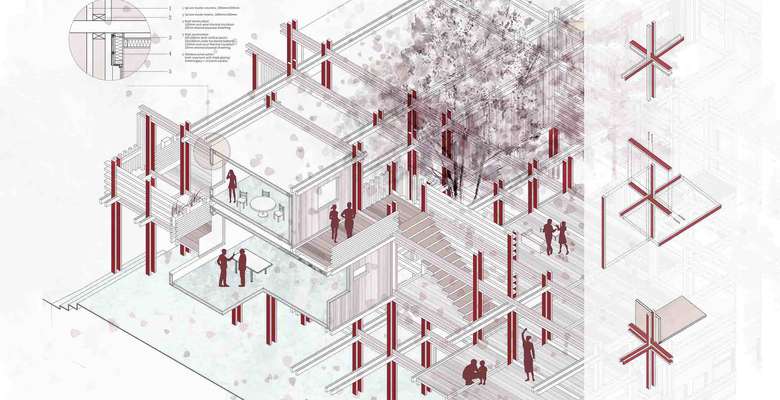
Hayao Miyazaki’s cartoon My Neighbor Totoro creates a strangely believable universe of supernatural creatures coexisting with modernity. Two girls live with the keeper of the forest, a friendly pet named Totoro - which was the inspiration for the forest homes.
In my imagination, Totoro visits the site and removes the walls between the homes, and in turn creates a space with a stronger social engagement. Totoro emphasises the fundamental role of architecture as a tool for social scenarios, replacing a strongly divisive existing terrace housing scheme into an 'edgeless' forest so as to encourage human interaction. In the project I tried to critically investigate the architectural structure, which is not only understood in its ‘utilitarian’ form, but also encompasses a wider tension of how the human body interacts with the spaces through repetition. Alongside, plants grow between the gaps of the cluster beams, creating a quiet atmosphere.
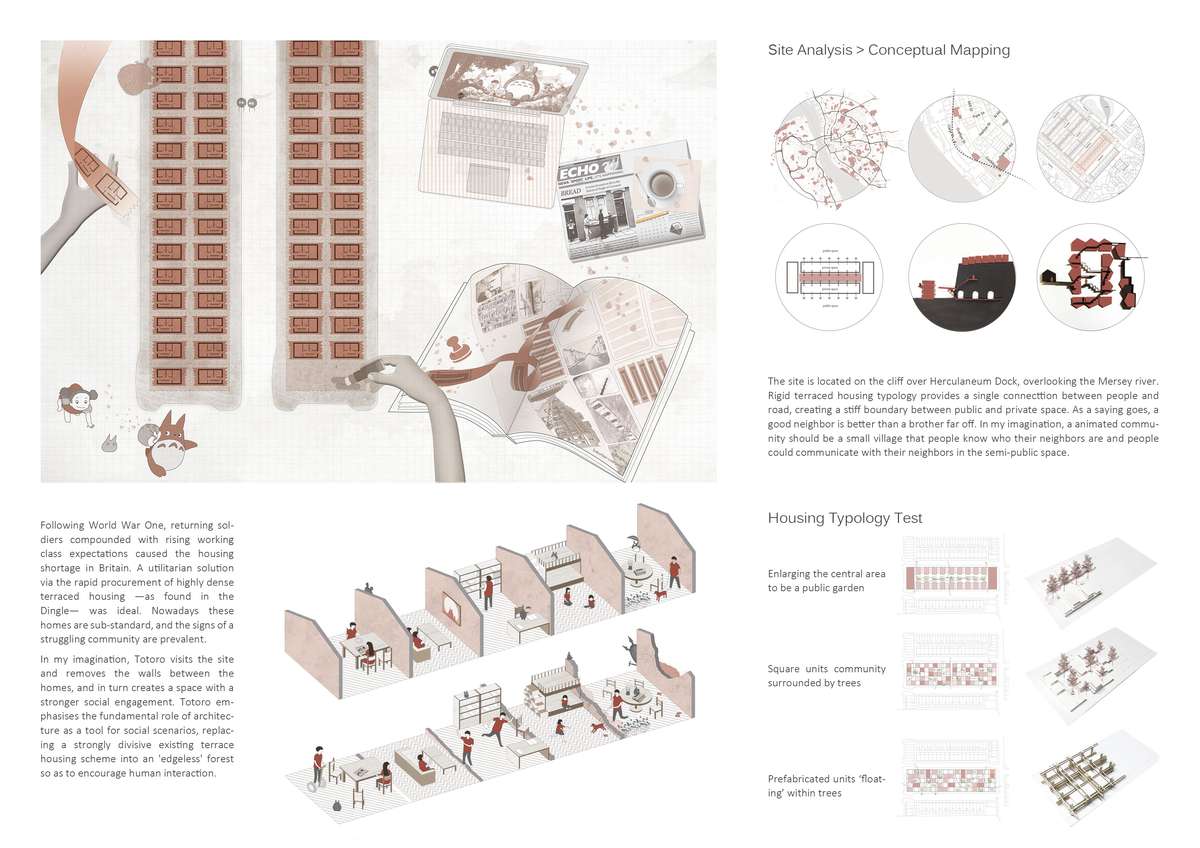
Following World War Two, returning soldiers compounded with rising working class expectations caused the housing shortage in Britain. A utilitarian solution via the rapid procurement of highly dense terraced housing was ideal. Nowadays these homes are sub-standard, and the signs of a struggling community are prevalent.
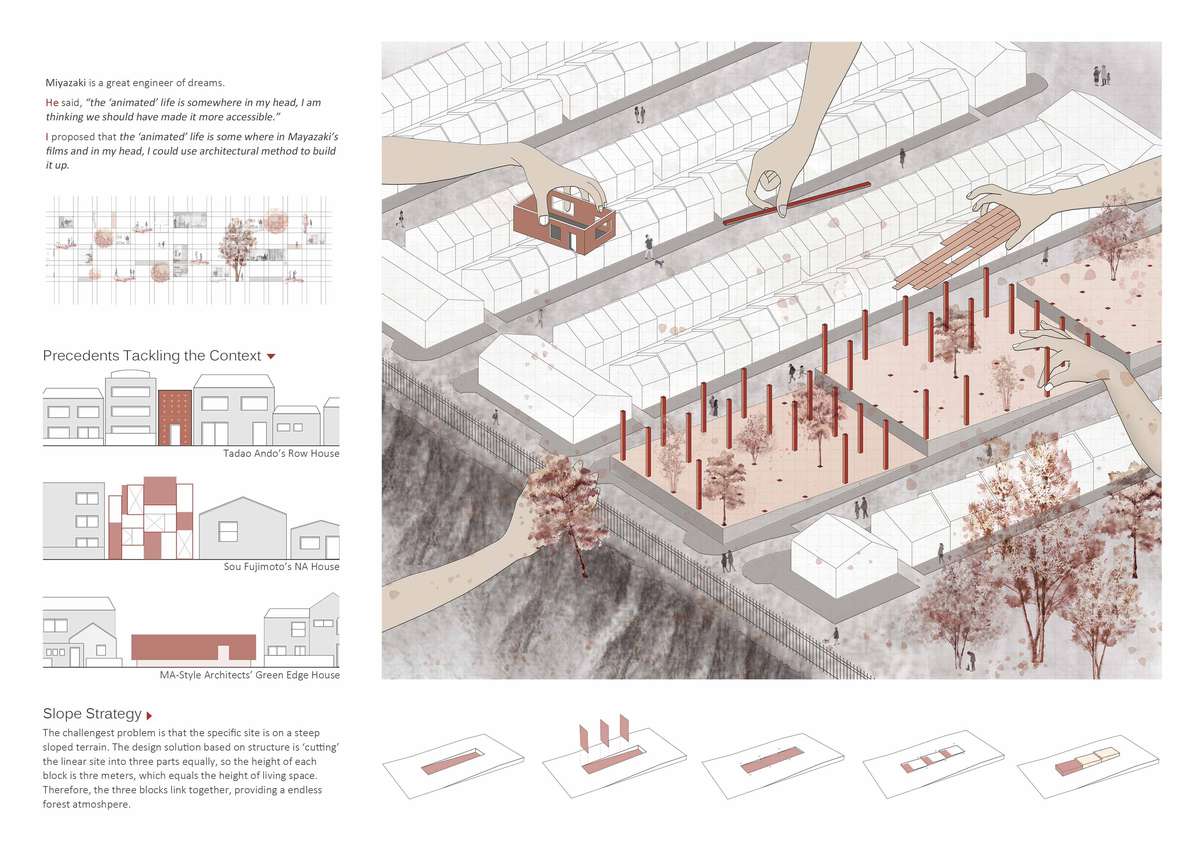
Miyazaki is a great engineer of dreams. He said, “the ‘animated’ life is somewhere in my head, I am thinking we should have made it more accessible.” I proposed that the ‘animated’ life is some where in Mayazaki’s films and in my head, and it could be built in reality.
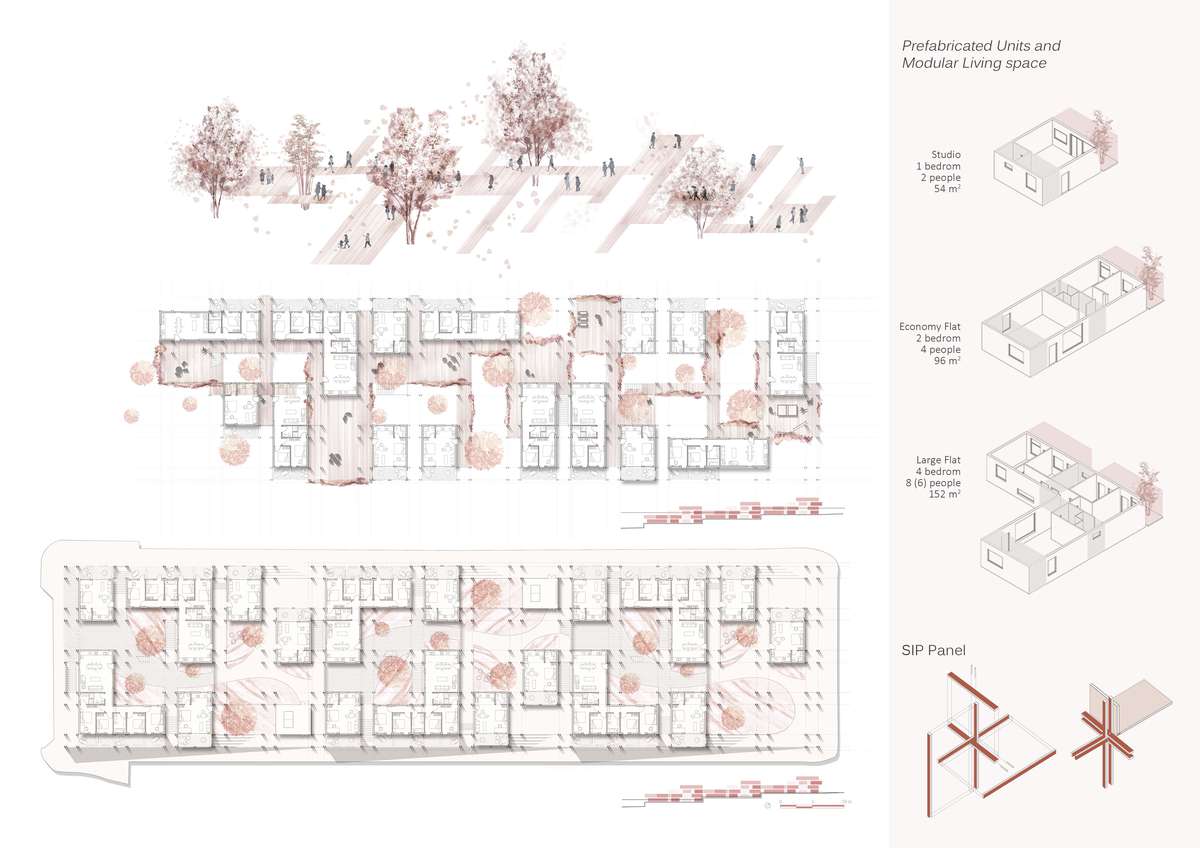
Prefabricated units and modular living spaces.
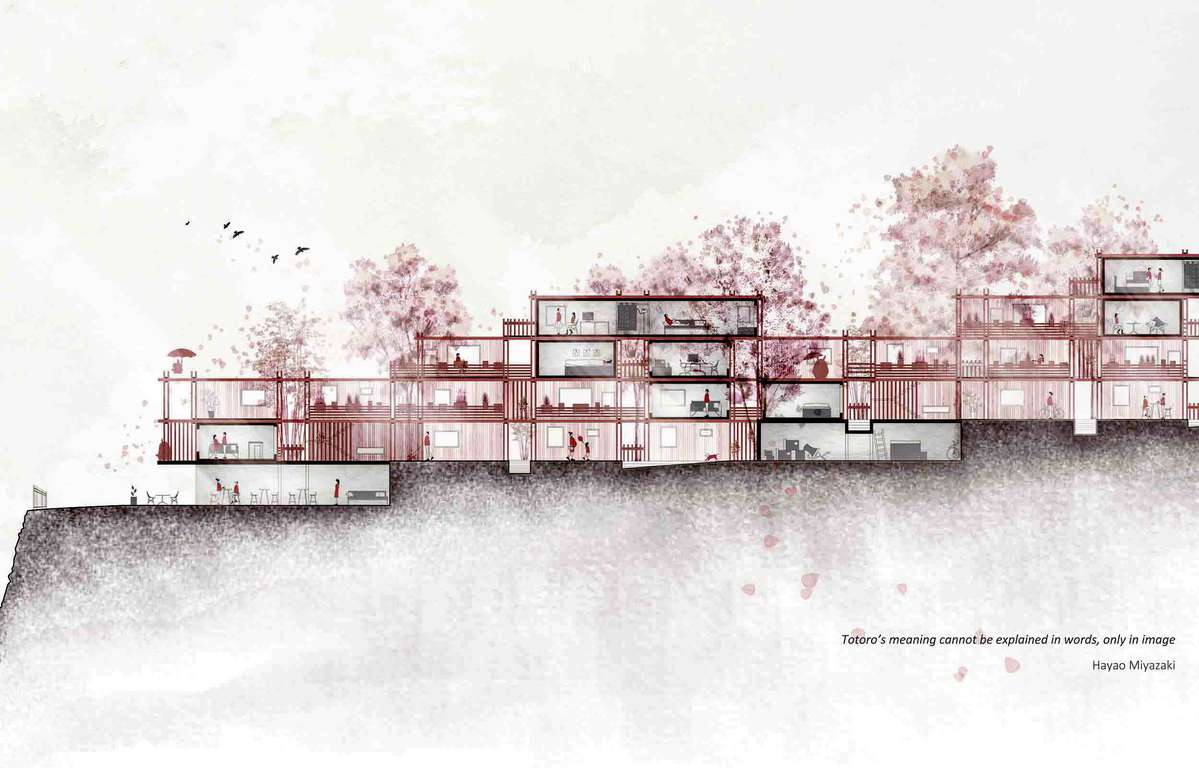
I tried to critically investigate the architectural structure, which is not only understood in its ‘utilitarian’ form, but also encompasses a wider tension of how the human body interacts with the spaces through repetition. Therefore, timber framed structures and trees highlight the feeling of a ‘forest’, where people inhabit the floating prefabricated units within the ‘trees’.
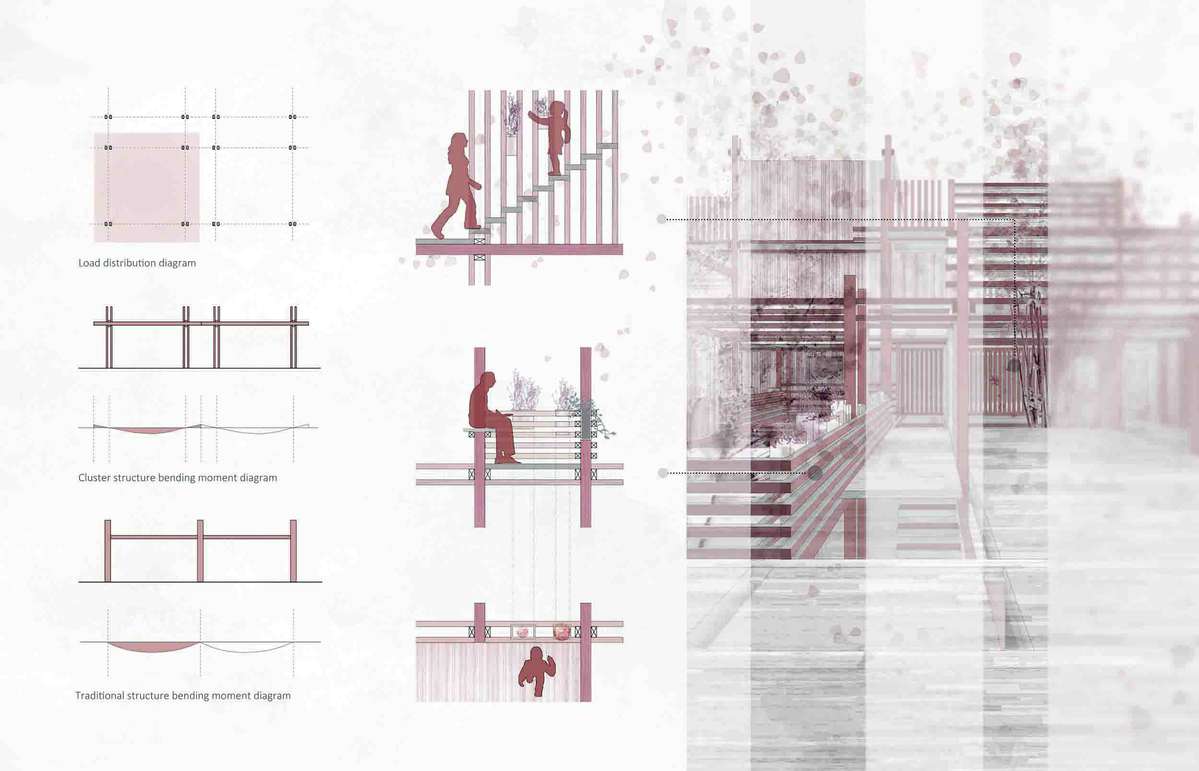
Alongside, plants grow between the gaps of the cluster beams, creating a quiet atmosphere in which people are surrounded and connected through the greenery, making Totoro’s metaphor a possible reality.
Mister Miyazaki’s Forest Homes
Mister Miyazaki’s Forest Homes

Hayao Miyazaki’s cartoon My Neighbor Totoro creates a strangely believable universe of supernatural creatures coexisting with modernity. Two girls live with the keeper of the forest, a friendly pet named Totoro - which was the inspiration for the forest homes.
In my imagination, Totoro visits the site and removes the walls between the homes, and in turn creates a space with a stronger social engagement. Totoro emphasises the fundamental role of architecture as a tool for social scenarios, replacing a strongly divisive existing terrace housing scheme into an 'edgeless' forest so as to encourage human interaction. In the project I tried to critically investigate the architectural structure, which is not only understood in its ‘utilitarian’ form, but also encompasses a wider tension of how the human body interacts with the spaces through repetition. Alongside, plants grow between the gaps of the cluster beams, creating a quiet atmosphere.
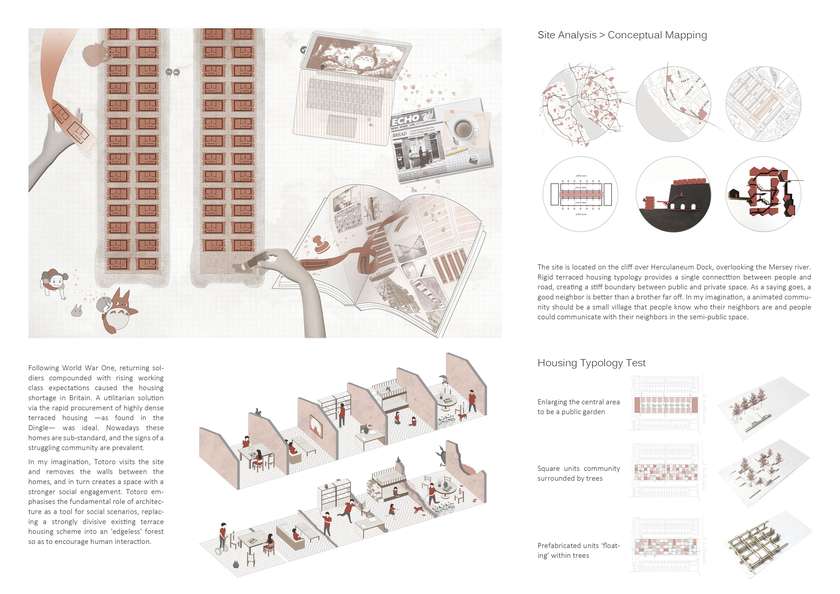
Following World War Two, returning soldiers compounded with rising working class expectations caused the housing shortage in Britain. A utilitarian solution via the rapid procurement of highly dense terraced housing was ideal. Nowadays these homes are sub-standard, and the signs of a struggling community are prevalent.
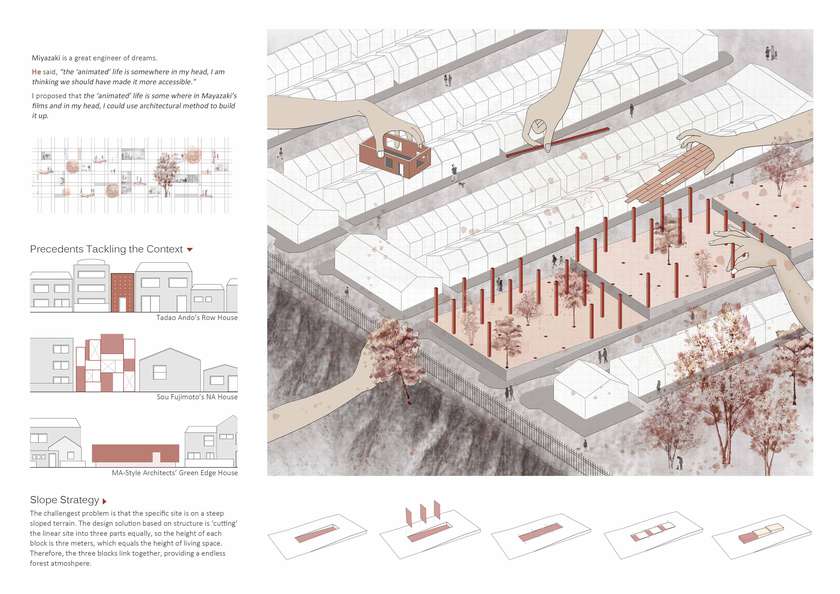
Miyazaki is a great engineer of dreams. He said, “the ‘animated’ life is somewhere in my head, I am thinking we should have made it more accessible.” I proposed that the ‘animated’ life is some where in Mayazaki’s films and in my head, and it could be built in reality.
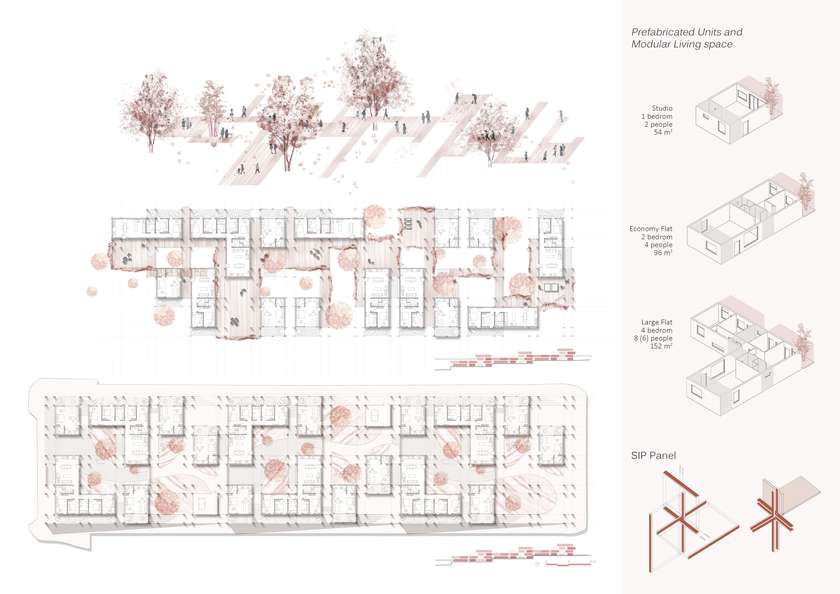
Prefabricated units and modular living spaces.

I tried to critically investigate the architectural structure, which is not only understood in its ‘utilitarian’ form, but also encompasses a wider tension of how the human body interacts with the spaces through repetition. Therefore, timber framed structures and trees highlight the feeling of a ‘forest’, where people inhabit the floating prefabricated units within the ‘trees’.
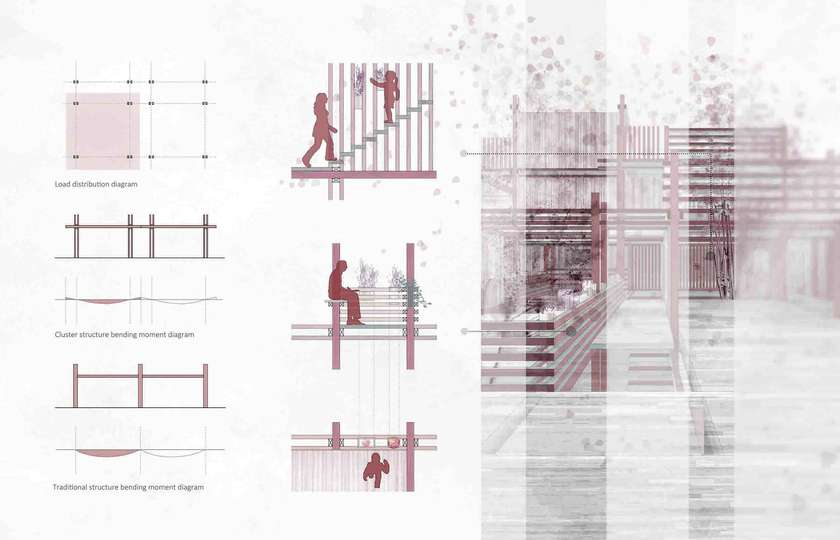
Alongside, plants grow between the gaps of the cluster beams, creating a quiet atmosphere in which people are surrounded and connected through the greenery, making Totoro’s metaphor a possible reality.